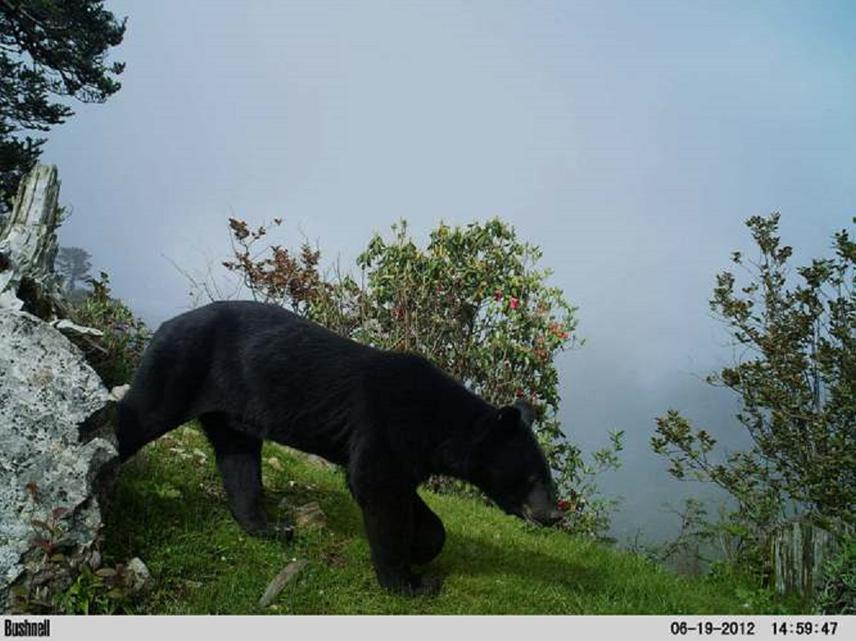Sunita Khatiwara
This study aims to provide an ecological insight on nature of the human-wildlife conflict in the region and its management particularly through social surveys, community awareness and outreach activities.

Himalayan Black Bear.
Human-wildlife conflict has become the major threat to wildlife conservation globally, including the biodiversity rich Himalayan region. Owing to its exceptional biodiversity, the state of Sikkim in the Eastern Himalaya is a part of 34 global biodiversity hotspots and among the smallest states in India, covering only 7096 km2; almost half of the area is under 50 degree rugged slopes, thus only 12% of the area is suitable for agriculture. The scattered croplands, often in small holdings, are surrounded by protected areas and its rich wildlife. This makes the agricultural lands highly exposed to depredation by wild animals. Over the past few years, the frequency of human wildlife conflict has increased considerably, changing people’s attitude towards wildlife conservation negatively. Two species that have become very noticeable in this context are Asiatic black bear (Ursus thibetanus) and Assamese macaques (Macaca assamensis). However, the lack of studies on the geographical spread and intensity of crop depredation by these two species has hindered any policy decisions on managing this problem and understanding people’s perceptions. Thus this study would generate a primary database to develop a baseline understanding on the interference of these two species and humans in the region.